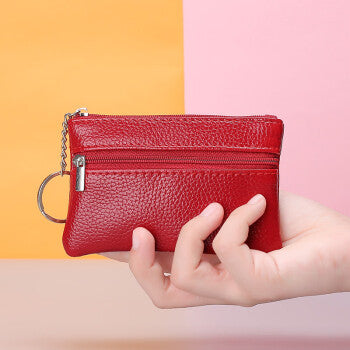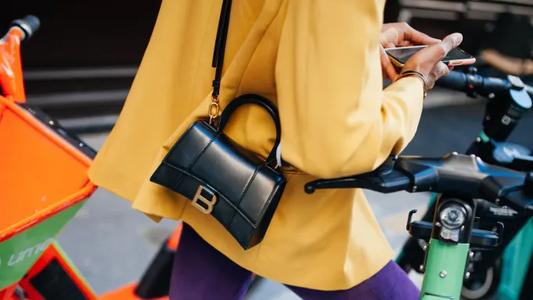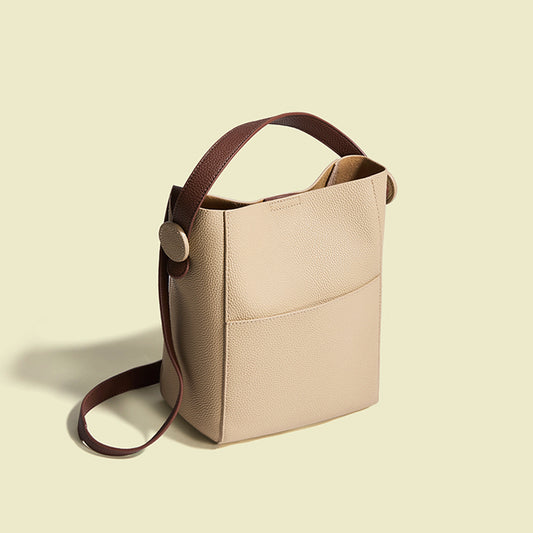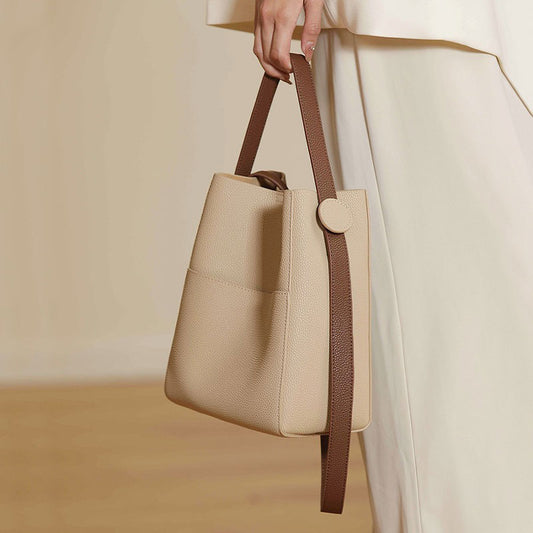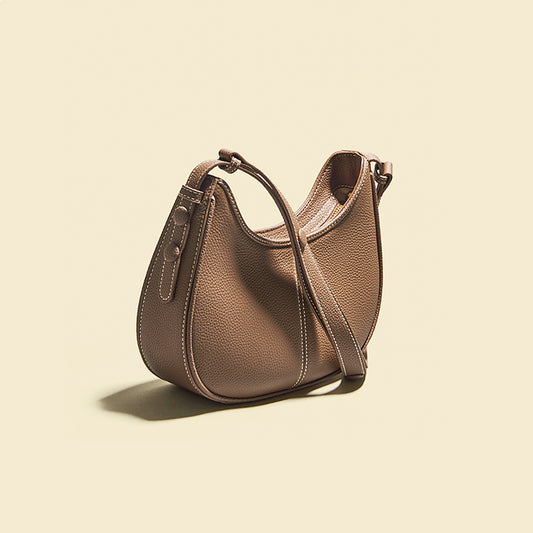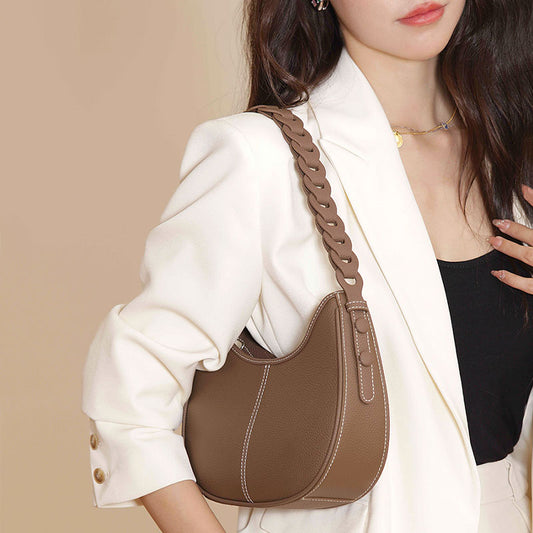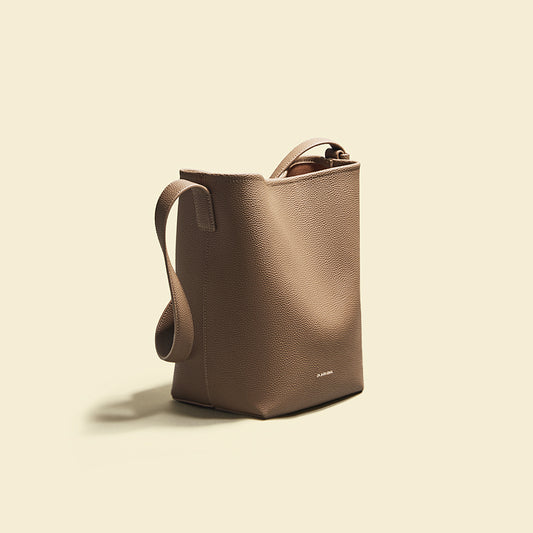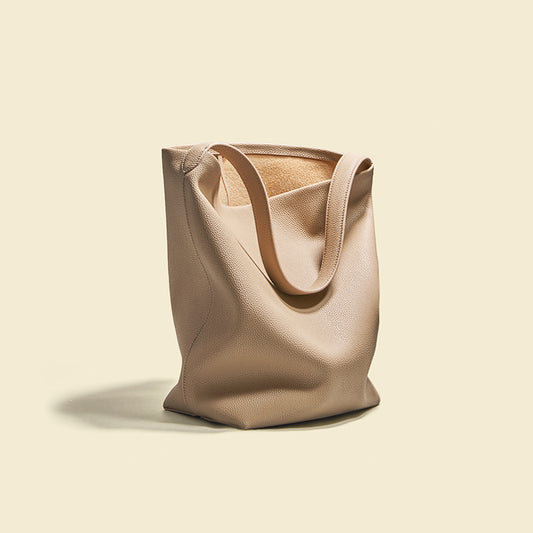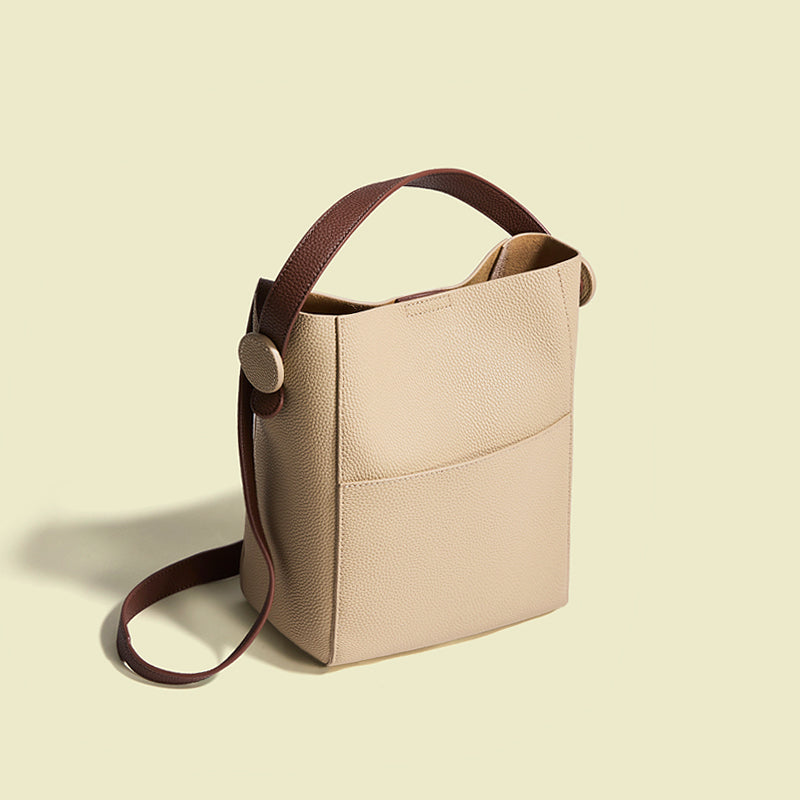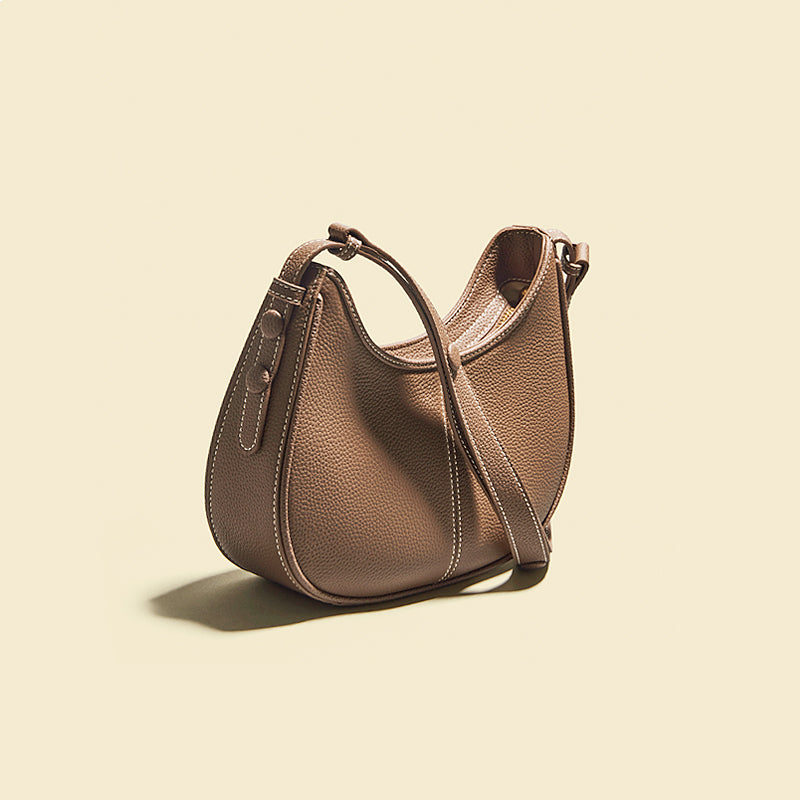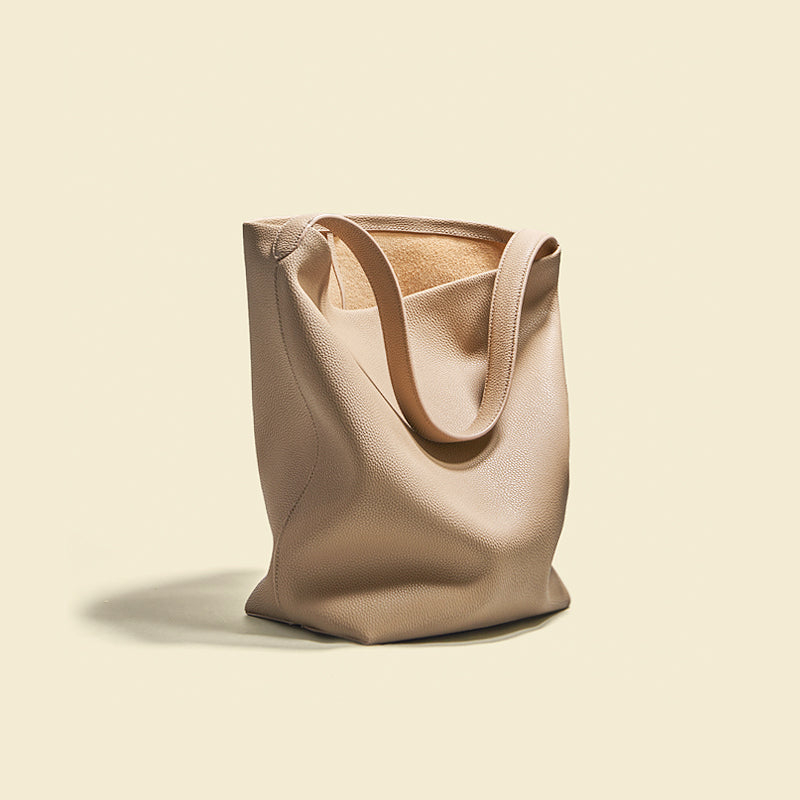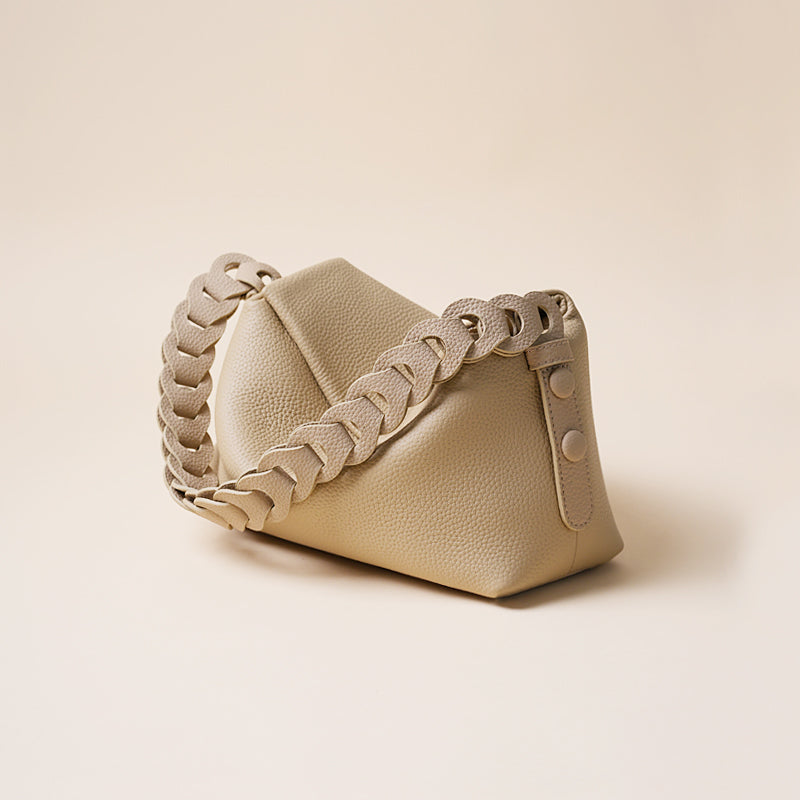When you buy a bad-quality leather bag, after some time you will find that the leather on the surface of the bag, piece by piece, is peeling off.
Leather handbags are a classy and classic accessory. When they begin to peel, it may be a great eyesore. There are fixes you may make on your own without having to take your luggage to a professional if it starts to peel. Peeling frequently results from either normal wear and tear or an unintentional scuff. Whatever the reason, using these suggestions will enable you to quickly resolve the problem and restore your bag to its original splendor.
Detailed Guide on How to Fix a Peeling Leather Bag
Method 1: Utilize Leather Paint
A form of paint called leather paint was created particularly for use on leather. You can choose the ideal one to go with your purse as it comes in a variety of colors. Any sections of the bag that are peeling or fading can be covered up using leather paint. Additionally, it will aid in preventing future harm to the leather.
You'll require leather paint.
Brush or rag Bowl or cup of water.
- Use soap and water to clean the part of the bag that is peeling. This will clear the surface of any dirt or debris that could be inhibiting the leather paint from adhering.
- Spoon a little leather paint into a cup or dish.
- After dipping the paintbrush into it, paint the region of the bag that is peeling.
- Apply the paint with a rag and rub it in until it is completely absorbed.
- Wait until the paint is fully dry before using your bag.
Method 2: Moisturizer, vinegar, and baking soda
This procedure involves five steps to help repair a leather bag that is starting to peel. Baking soda will assist balance the pH of the leather, vinegar will help remove any accumulated filth or grease from it, and moisturizer will help keep the leather wet.
You'll require:
- clear vinegar
- bread soda
- Moisturizer
- cotton swab
- Dip a cotton ball into white vinegar and apply it to the peeling region of the bag. This will assist in removing any grime or grease that could be contributing to the leather peeling.
- Cover the portion of the bag that is peeling with baking soda. This will assist in restoring the pH balance of the leather and aid in halting further peeling.
- Apply a moisturizing cream or moisturizer to the region of the bag that is peeling. The leather will stay moisturized and stop peeling as a result of this.
- Allow the bag to sit for a few hours so that the moisturizing ingredients—vinegar, baking soda, and baking soda—can all do their job.
- Remove any extra cream or moisture from the bag and let it dry fully. The region that was peeling ought should now be noticeably different.
Method 3: Leather Padding
The leather may be too thin there if the bag's edges are beginning to rip and flake. This problem may be solved by lining the interior of the bag with cushioning. This will provide additional defense and stop the leather from peeling further.
You'll require:
- A leather cushion
- Scissors and fabric glue
- Thread with a needle
- The area of your bag where the leather has peeled off should be measured. Then, cut a piece of leather padding that is a little larger than the area that was measured.
- Cover the leather padding's back with fabric adhesive and affix it to the bag where the leather is flaking. To ensure that the padding is secured, make sure to apply pressure firmly.
- You may use a needle and thread to stitch all around the padding's edges to keep it from coming undone. This will forge a solid connection between everything, keeping it all in place.
- Allow the leather padding to dry once you've fastened it. Your purse should be as good as new after it has completely dried!
Method 4: Use adhesive patches to repair peeling leather
Small, fabric-backed squares or rectangles with a variety of shapes and sizes are known as adhesive patches. To hold the two surfaces together while undergoing more substantial repairs, they are made to adhere to the surface of materials like leather, vinyl, and plastic.
You'll require:
Patch of adhesive or sealer for leather
soft fabric
- Use a soft cloth to scrub the leather's surface thoroughly. Get rid of any dirt, dust, and debris leftovers. This is crucial because any debris will prevent the adhesive patch from adhering properly.
- If the leather is peeling in many places, separate each one and fix it using an adhesive patch. For the patch to make touch with the leather surface, make sure to push it firmly into position.
- Before proceeding to the following step, allow the adhesive patches to cure fully. The glue that is used will determine how long it takes, but it should take at least a few hours.
- Apply a coat of leather glue or sealer to the surface once the repairs have dried. The connection between the patch and the leather will be strengthened and protected as a result.
- Before using your bag, let the glue or sealant completely cure. This might take anything from a few hours to a whole day, depending on the brand and kind you use. This technique is essential for repairing leather bags that are peeling.
Method 5: Use Liquid Leather to Repair Peeling Leather
Your bag's leather may need to be restored with a liquid leather repair treatment if it is seriously flaking. When all other options have failed, these solutions, which are made to fix and seal cracked or damaged leather, can save your life.
You'll require:
Fluid leather Soft fabric
- To ensure proper usage of the liquid leather restoration product, review the package instructions.
- A soft cloth should be dipped in a tiny amount of liquid leather.
- Gently work the liquid leather into the part of the bag that is peeling.
- Before using your bag, let the liquid leather completely dry off.
- Your peeling leather bag should be like new in no time if you follow these instructions!
Additional Quick Fixing a Leather Bag of Peeling:
Permanent Marker Pen:
Sand the flaky area gently before coloring over it with a matching marker pen. Layering might be necessary for full coverage.
Shoe Polish:
Remove damaged areas and apply matching shoe polish using a clean rag. Build coverage with multiple layers if needed.
Leather or Acrylic Paint:
Sand the peeling areas, then apply matching paint in thin layers. Consider adding a topcoat for extra protection.
Leather Filler:
Remove peeling areas, apply leather filler, and let it set before painting with matching paint. Finish with a topcoat for a polished look.
Nail Polish:
Use clear nail polish to disguise minor damage or pair it with a permanent marker for a quick touch-up.
Browse our articles related fix leather bag :
How to fix frayed leather purse straps?
How to fix cat scratches on your leather purse?
How Can Leather Bag Stitching Be Fixed?
How Can A Leather Bag Be Repaired?
How Come Leather Peels, and What Causes It?
A leather purse is a fantastic accessory, but if the leather starts to peel, it may be very unsightly. Your leather purse may be peeling for some reason. Among the most frequent reasons are some of the following:
Cleaning Supplies
On a leather bag, using aggressive cleaning agents might cause the leather to peel. Before using any cleaning chemicals on your leather purse, make sure you read the label. If you're unsure whether a product is safe to use on leather, test it in a hidden location.
UV Radiation
One of the leather's worst enemies is the sun. Leather can become dry, stiff, and brittle when exposed to ultraviolet light from the sun, which damages the protein structure of the material. This may cause peeling and cracking over time. If you must leave your bag in the sun, cover it or use sunscreen to protect it.
Aging
Since leather is made of natural materials, it will ultimately deteriorate and become outdated. Leather loses flexibility with time and is more likely to peel and break. It isn't much you can do to prevent your luggage from aging if it is already beginning to do so. By taking proper care of your bag and periodically using a leather conditioner, you may, however, slow down the process.
Leather substitutes
Peeling can occasionally be brought on by a Material Difference. Natural leather is created from animal hide, whereas synthetic leather is made from artificial components. Artificial materials are more prone to peeling and splitting since they are weaker than natural materials. If you're unsure if your bag is made of fake leather or real leather, look at the label or get in touch with the maker.
Adhesive Leather
Natural leather scraps that are too tiny or defective to be used for other items are used to create bonded leather. To create bonded leather, these leftovers are mixed with synthetic materials before being pressed into a sheet. Bonded leather is thus weaker than natural or synthetic leather and more prone to peeling and breaking.
How Can You Prevent Your Products' Leather From Peeling?
Peeling is one of the most frequent issues that customers of leather products encounter. This issue can take many different forms and be brought on by some things, including poor handling, poor storage, and even normal wear and tear. Even though dealing with leather that is peeling might be aggravating, there are a few things you can do to try to solve the problem.
Finding out what is causing the peeling is the first step. You may take the necessary actions to fix the issue after you understand what is causing it.
Unfortunately, you can only try to stop it from happening again in the future if your leather item is beginning to peel as a result of normal wear and use. However, there are actions you may do to fix the problem if the peeling is the result of negligence or improper storage.
If poor maintenance is to blame for the peeling leather, the first step is to figure out what you are doing incorrectly and fix it. Many times, consumers are harming their leather items without even realizing it. Some typical errors that cause peeling include:
- not frequently washing the leather
- not use the proper cleaners or conditioners
- not keeping the leather once it has completely dried
- Keeping things in places with high humidity or direct sunshine
Once you have fixed any thoughtless errors, you must start treating your leather goods with more care. Regular cleaning with the proper cleansers and conditioners, letting them completely dry before storing them, and keeping them in a cool, dry location are all important.
You must take action to remedy the problem if improper storage is the reason your leather is peeling. Make sure your leather products are not being exposed to harsh sunlight or a lot of dampness first. Additionally, make sure that they are not kept in extremely hot or cold conditions. Additionally, when keeping them, try to keep various leather items separate from one another to help avoid damage.
FAQ
How to fix a flaking leather bag?
A soft cloth should be dipped in a tiny amount of liquid leather. Gently work the liquid leather into the part of the bag that is peeling. Before using your bag, let the liquid leather completely dry off.
How to fix a peeling faux leather bag?
Nail polish is a quick, easy, and inexpensive fix for faux leather bags, jackets, and furniture. You can apply it almost anywhere to disguise peeling damage and reapply it as often as necessary to restore synthetic leather goods.
Do real leather products peel?
Technically leather will not crack/peel, however pigment/finish that is applied to it might. Often this is because the wrong kinds of products were used when treating the leather, or can also be a result of a treatment the manufacturer has used
What kind of leather never peels?
The leather itself, if it is 100% genuine, should never peel. There is no part of the material that will come away from the rest in a peeling fashion (apart from surface treatments).
Conclusion
Although leather is a stunning and opulent material, when it starts to rip, it may be quite frustrating. This article on how to repair peeling leather bags should have convinced you that doing so isn't as difficult as it first appears. With a little perseverance and some inexpensive supplies, you can have your bag looking as good as new in no time.


